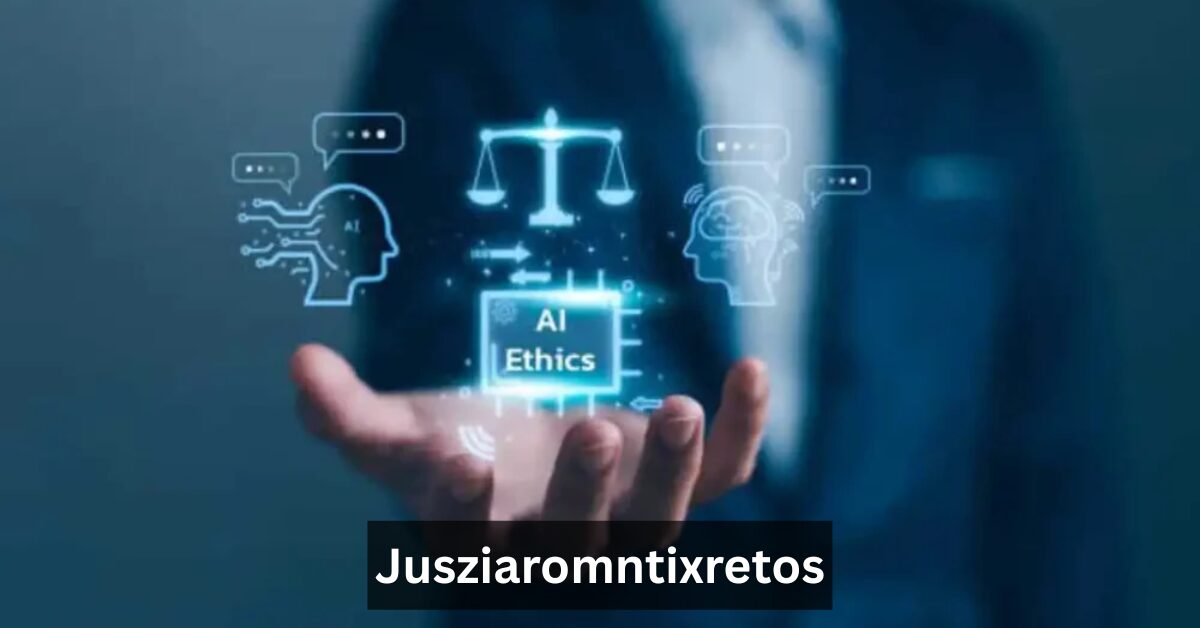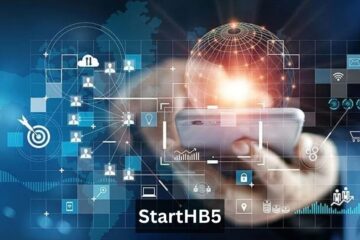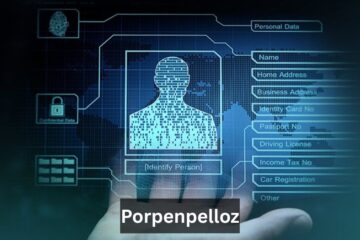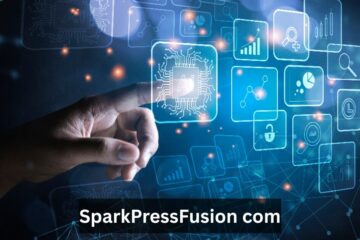In a world where technology advances faster than policy, jusziaromntixretos emerges as a rallying concept that insists innovation must be paired with responsibility. This idea—part philosophy, part framework—places ethical decision-making at the center of product design, deployment, and governance. For practitioners, policymakers, and curious readers alike, understanding jusziaromntixretos meaning is the first step toward building systems that inspire trust rather than fear.
The rise of new digital philosophies reflects a broader societal demand: technology should empower people, protect rights, and improve outcomes while minimizing harm. The concept of jusziaromntixretos captures this demand, integrating legal thinking, data responsibility, and resilient security into a single, actionable mindset that guides the future of technology ethics.
What is Jusziaromntixretos?
Defining the term
Jusziaromntixretos blends justice, omniscient insight, and challenge-driven innovation—crafting tech that’s lawful, ethical, and resilient.Think of it as an umbrella philosophy for ethical innovation that spans legal tech, AI, cybersecurity, and social impact.
This definition is intentionally broad: jusziaromntixretos is a mindset for organizations to ask the right questions early—Does this respect privacy? Does it reduce bias? Is it sustainable?—and to operationalize answers through policy, design, and measurable governance.
Core meaning and symbolic essence
Symbolically, jusziaromntixretos blends three pillars: legal clarity, comprehensive technological insight, and challenge-oriented problem solving. The concept amplifies digital justice systems and places algorithmic accountability and data protection frameworks at the forefront of product lifecycle decisions. It reimagines technology not merely as tools, but as social instruments that must be audited, equitable, and durable.
By adopting jusziaromntixretos, organizations commit to transparency, fairness, and continuous improvement—principles that map directly to global frameworks such as GDPR, OECD AI Principles, and ISO standards for information security.
The Philosophy Behind Technological Responsibility
The philosophy guiding jusziaromntixretos is simple yet powerful: technology should increase human flourishing while safeguarding rights. It borrows from technoethics and digital humanities to center human dignity in computational systems. Instead of treating ethics as a compliance checkbox, jusziaromntixretos treats it as a generator of competitive advantage—building digital trust and brand strength.
Practically, this philosophy encourages interdisciplinary collaboration: lawyers, data scientists, humanists, and community stakeholders must co-create policies. Organizations that internalize this ethos see reduced regulatory risk, better user adoption, and stronger reputational resilience.
Etymology and Conceptual Breakdown
Deconstructing “Jusziar,” “Omntix,” and “Retos”
Breaking the word into morphemes helps reveal intent. “Jusziar” evokes jurisprudence and justice—linking technology projects to lawfulness and moral accountability. “Omntix” suggests holistic systems thinking: cross-domain analytics, predictive analytics, and digital twin systems that provide comprehensive situational awareness. “Retos,” Spanish for challenges, reinforces action: technology must confront complex problems (retos) and provide measurable solutions.
This decomposition is more than linguistic play; it reflects a roadmap for practice: legal-first design (Jusziar), systems-level transparency (Omntix), and challenge-driven outcomes (Retos).
The synthesis of law, omniscience, and challenge
When synthesized, these elements create a framework where legal requirements inform system architecture, omniscient analytics inform ethical choices, and challenges (retos) become the engine for iterative improvement. For example, an AI-driven legal automation product guided by jusziaromntixretos would integrate GDPR-compliant data flows, use explainable AI (XAI) techniques to ensure algorithmic accountability, and include continuous monitoring to reduce bias.
This synthesis also aligns with existing global standards and organizations—IEEE guidelines on ethically aligned design, UNESCO’s recommendations for AI ethics, and the European Commission’s AI Act—making jusziaromntixretos both aspirational and practically implementable.
The Vision of Jusziaromntixretos in the Digital Era
Technology guided by ethics
Imagine AI systems not only optimized for accuracy but also for fairness and explainability. Jusziaromntixretos pushes organizations to design products with built-in privacy-by-design, data encryption, and robust cloud security. This vision is consistent with recommendations from the OECD AI Principles and the World Economic Forum’s work on digital trust—embedding ethics across the technology lifecycle rather than at the end.
This proactive approach reduces the chance of costly data breaches, regulatory fines, and public backlash. It also makes technology safer and more accessible—a vital promise in a world increasingly dependent on ML, NLP, and IoT systems.
The convergence of justice, data, and intelligence
Jusziaromntixretos imagines a convergence: legal compliance (justice) woven into data governance (omntix), powering intelligent systems that solve social challenges (retos). This convergence supports initiatives like digital inclusion and equitable access to technology, ensuring that predictive analytics and digital twin models serve communities ethically and sustainably.
Aligning with SDGs and global governance efforts, this vision encourages companies to measure social impact and environmental footprints when deploying advanced tech, including quantum computing and large-scale AI.
Balancing Innovation and Accountability
Balancing the push for innovation with strong accountability mechanisms is the essence of jusziaromntixretos. It advocates for measurable governance—auditable pipelines, third-party audits, and participatory design—to ensure that innovation does not outpace oversight. Entities like ISO and regulatory frameworks like GDPR provide practical anchors; together with civil society groups such as the Electronic Frontier Foundation (EFF), they form a checks-and-balances ecosystem.
This balance enables rapid progress while maintaining public trust—because transparency and fairness increase adoption and reduce systemic risk.
A. Legal Technology (Jusziar)
Smart contracts, AI law, and blockchain governance
Jusziaromntixretos in legal tech manifests through computational law and blockchain compliance. Smart contracts can be designed with audit trails, immutability, and transparency, while ensuring compliance with digital legislation. Legal informatics—where AI aids legal research and case prediction—benefits from explainable AI and human-in-the-loop models to prevent overreliance on opaque recommendations.
When implementing legal automation, organizations should align with regulatory technology (RegTech) practices and standards set by bodies like the European Commission and the OECD AI Principles to maintain legitimacy and public confidence.
Digital justice and automated compliance
Automated compliance tools can monitor regulatory changes and adapt systems in near real-time. Jusziaromntixretos encourages integrating these tools with privacy governance structures and legal review processes, reducing friction between innovation and law. This approach is particularly crucial for cross-border services that must navigate GDPR and local cyber law.
B. Data Analytics (Omntix)
Ethical data management and transparency
Data responsibility jusziaromntixretos emphasizes transparent data collection, informed consent, and purpose limitation. Ethical data analytics practices—such as differential privacy, robust anonymization, and clear data provenance—build trust and reduce legal exposure. Organizations should adopt standards and tools that align with GDPR and international best practices.
Bias mitigation and fairness algorithms
Bias in ML models can entrench discrimination. Jusziaromntixretos prescribes continuous bias mitigation, diverse datasets, and fairness-aware algorithms. Techniques like reweighting, adversarial debiasing, and post-hoc explainability help ensure responsible machine learning and fairness in data-driven decisions. Scholars like Cathy O’Neil and Luciano Floridi inform this approach by highlighting the social consequences of algorithmic bias.
C. Cybersecurity (Retos)
Trust, privacy, and regulatory adherence
Cybersecurity ethics under jusziaromntixretos requires integrating information security standards (ISO 27001, NIST) with privacy-by-design. Data breach prevention, encryption at rest and in transit, and rigorous access controls are baseline requirements. Cloud security and secure software development lifecycle processes minimize vulnerabilities.
Ethical hacking and digital resilience
Ethical hacking—used to proactively find vulnerabilities—should be institutionalized. Digital resilience includes not only defensive measures but also clear incident response, transparent disclosure policies, and regulatory compliance. A jusziaromntixretos-driven approach fosters stronger cyber governance and public confidence.
Jusziaromntixretos and Artificial Intelligence
Responsible AI frameworks
Responsible AI under justification of jusziaromntixretos means coupling model performance with fairness, explainability, and accountability. Frameworks from IEEE, UNESCO, and the OECD provide guardrails for development and deployment, emphasizing human oversight and risk-based approaches. Organizations should incorporate these into model risk management and vendor selection.
Explainability, fairness, and bias control
Explainable AI systems increase trust. Techniques like model-agnostic explanations (LIME, SHAP) and inherently interpretable models help stakeholders understand decisions made by AI. Combined with governance policies influenced by thinkers such as Tim Berners-Lee and Lawrence Lessig, jusziaromntixretos promotes legal and ethical clarity.
AI governance models inspired by jusziaromntixretos
AI governance models might include an ethics board, continuous impact assessment, and public reporting—approaches that echo the spirit of the European Commission’s AI Act. These mechanisms enable organizations to respond to evolving standards and stakeholder expectations, positioning them as responsible innovators.
Societal and Ethical Implications
Tech for inclusivity and equality
Jusziaromntixretos drives tech that reduces inequality—tools that expand digital literacy initiatives, support adaptive learning systems, and ensure equitable access to services. Projects aligned with the UN SDGs and UNESCO’s guidance on inclusive tech exemplify how technology can become a force for social good.
Data ethics and human rights
Protecting human rights in technology means ensuring due process, privacy, and non-discrimination. Data ethics involves clear consent practices, transparent governance, and mechanisms for redress. Collaboration with civil society groups like the EFF and academic fields such as digital sociology strengthen these efforts.
Sustainable technology for social good
Sustainability is central: eco-digital transformation and green computing reduce the environmental impact of AI and cloud infrastructure. Jusziaromntixretos urges organizations to measure and minimize digital carbon footprints and to design technology that supports long-term societal well-being.
Interdisciplinary Collaboration and the Jusziaromntixretos Mindset
How law, science, and philosophy converge
True adoption of jusziaromntixretos requires multidisciplinary teams—lawyers, technologists, ethicists, and community representatives—to co-create policies. Fields like computational law and information systems theory provide practical tools to embed legal constraints into code, while technoethics provides normative frameworks.
Collaborative governance and ethical innovation
Collaborative governance models—public-private partnerships, standards bodies like ISO, and stakeholder engagement forums—promote shared responsibility. Organizations that collaborate across sectors can better anticipate regulatory shifts and lead on digital policy innovation.
The importance of community-driven approaches
Community engagement—listening to affected populations, conducting participatory design, and publishing plain-language impact reports—creates legitimacy. This people-first orientation aligns with jusziaromntixretos’ call for accountability and inclusion.
Regulatory Frameworks Supporting Jusziaromntixretos
GDPR, AI Act, and ISO standards
Key legal anchors include GDPR for privacy, the European Commission’s AI Act for AI governance, and ISO standards for security and quality management. These instruments provide actionable requirements and best practices for organizations aiming to comply while innovating responsibly.
Global digital governance and compliance
Global coordination—through OECD principles, WEF initiatives, and UNESCO recommendations—helps harmonize standards and reduce fragmentation. For multinational deployments, aligning with these frameworks reduces compliance costs and reputational risk.
Case studies of ethical policy in action
From companies implementing privacy-by-design to municipalities using AI for public services with open audits, case studies demonstrate how jusziaromntixretos principles translate into practice. These stories create playbooks for other organizations seeking to follow suit.
Challenges and Opportunities in Implementing Jusziaromntixretos
Ethical dilemmas in data use
Complex dilemmas—like balancing public health insights with privacy—require nuanced governance. Jusziaromntixretos encourages layered consent models, impact assessments, and stakeholder consultation to navigate these challenges ethically.
Overcoming regulatory and cultural barriers
Implementation barriers include legacy systems, regulatory lag, and cultural resistance. Opportunities arise through capacity-building—continuous professional learning, digital literacy initiatives, and cross-sector training—which accelerate cultural change.
Building digital trust through transparency
Transparency—open model documentation, bias audits, and clear user communication—creates digital trust. Organizations that publish independent audits and align with external benchmarks (e.g., IEEE guidelines) gain competitive advantage.
The Future of Jusziaromntixretos
AI evolution and ethical alignment
As AI capabilities expand, jusziaromntixretos will guide responsible trajectories—prioritizing explainability, fairness, and human oversight. Thought leaders like Yuval Noah Harari and policy influencers such as Tim Berners-Lee shape public dialogues that will influence adoption curves.
The rise of human-centric technology
The future favors human-centric computing—technologies designed around human needs, empathy, and dignity. Jusziaromntixretos is the blueprint for this shift, encouraging companies to create tools that augment human capabilities responsibly.
Anticipating global digital ethics frameworks
Expect more harmonized global frameworks influenced by OECD AI Principles, UNESCO, and WEF. These will create clearer expectations and standardized practices, making it easier for organizations to operationalize jusziaromntixretos.
Community Engagement and Education
Empowering professionals with digital literacy
Widespread training programs—on bias mitigation, privacy governance, and secure development—are essential. Continuous professional learning helps professionals adapt to evolving risks and opportunities, supporting long-term resilience.
Promoting ethics and inclusion in tech education
Integrating ethics into STEM curricula and offering interdisciplinary degrees (digital sociology, computational law) produce practitioners fluent in both technical and normative domains. This educational shift is critical for sustainable change.
Open dialogues on responsible innovation
Public forums, participatory policymaking, and community audits promote accountability. Encouraging open dialogues builds consensus and democratizes decisions about technology.
Read Also: Kei20oxiz: Meaning, Technology, and Smartwear Future
Environmental and Sustainable Technology Perspectives
Reducing digital carbon footprints
Jusziaromntixretos extends to environmental responsibility: design choices—efficient algorithms, edge computing, and optimized data centers—lower emissions. Organizations should track digital carbon footprints and set reduction targets aligned with the SDGs.
Green computing and eco-tech principles
Green computing best practices—resource-efficient ML models, recycling hardware, and renewable-powered data centers—align with jusziaromntixretos’ sustainability mandate. Such approaches also appeal to conscious consumers and stakeholders.
The environmental responsibility of AI systems
AI systems consume energy; optimizing model training and adopting sustainable cloud providers mitigates impact. Transparent reporting on environmental metrics builds trust and aligns tech with broader sustainability goals.
Case Studies and Practical Examples
How organizations apply jusziaromntixretos principles
Real-world examples include municipalities using explainable AI for public services, firms integrating privacy-by-design into product releases, and consortia aligning on ethical standards. Organizations often pair internal ethics committees with external audits to operationalize principles.
Lessons from real-world ethical innovations
Key lessons include: start early (ethics during design), be transparent (publish methodologies), and involve stakeholders (co-design with affected communities). These practices reduce risk and amplify positive impact.
Success stories bridging technology and morality
Success stories—from inclusive predictive analytics improving services to blockchain-enabled transparent supply chains—show that ethical design can drive measurable social and economic benefits. These narratives inspire broader adoption.
Frequently Asked Questions
What industries can benefit from jusziaromntixretos?
Virtually every sector benefits—legal tech, healthcare, finance, government, and education—especially where AI, big data, and automation intersect with human rights and public interest.
How does it relate to AI ethics?
Jusziaromntixretos embraces AI ethics by emphasizing explainability, bias mitigation, accountability, and human oversight—aligned with OECD AI Principles, IEEE guidelines, and UNESCO recommendations.
Is jusziaromntixretos a philosophy or a framework?
Both. It functions as a guiding philosophy and a practical framework for embedding legal, ethical, and resilient practices into technology development and governance.
How can businesses adopt these principles?
Start with leadership buy-in, create multidisciplinary ethics teams, align with standards (GDPR, ISO), adopt privacy-by-design, and publish transparent impact assessments.
What is the ultimate goal of jusziaromntixretos?
To create technology that enhances human flourishing, protects rights, minimizes harm, and advances sustainability—bridging innovation and integrity.
Summary
Jusziaromntixretos is more than a concept—it’s a practical, optimistic roadmap for aligning innovation with justice, responsibility, and sustainability. By integrating legal rigour, system-level thinking, and challenge-oriented design, organizations can build technology that delivers remarkable value while protecting people and the planet. This is the future-forward philosophy that sets leaders apart.



